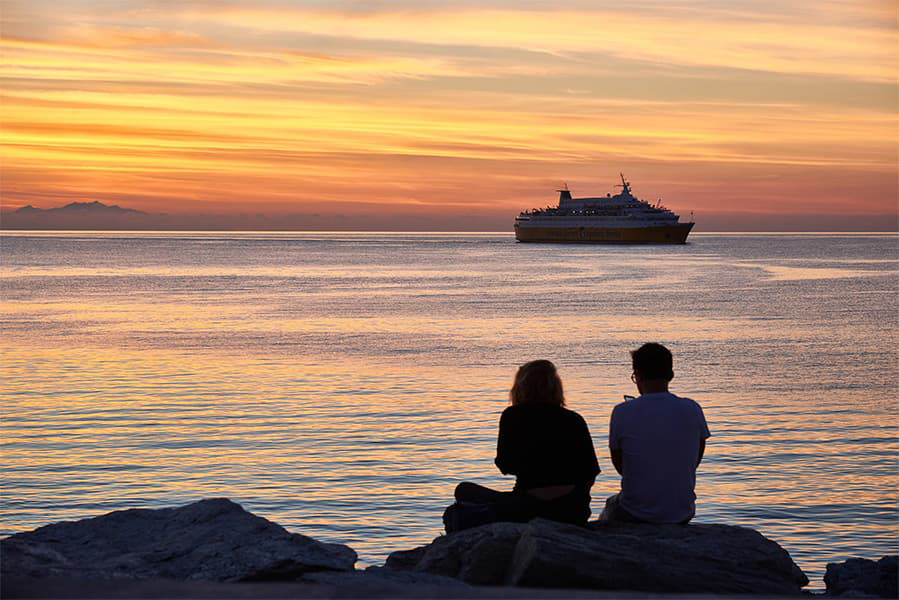Ilovik - Zadar
Ferries to Croatia
Ilovik - Zadar
Ferries to Croatia

There are around 2 weekly sailings from Ilovik to Zadar. The Ilovik Zadar ferry is operated by
Ferries from Ilovik to Zadar typically depart from Ilovik at around 10:15. The average sailing time of a Zadar Ilovik ferry is approximately 1h 30m.
Ferry prices for Ilovik Zadar ferries typically range between €24* and €48*. The average price is around €31*. The cheapest ferry prices from Ilovik to Zadar start from €24*. The average price for a foot passenger is €31*.
Pricing will vary by season and depend on the number of passengers, vehicle type and sailing time.
The distance between Ilovik to Zadar is approximately 52.3 miles (84.1km), or 45.4 nautical miles.
No ferry operators currently provide a car ferry between Ilovik and Zadar
Yes, foot passengers can travel on ferries from Ilovik to Zadar with Krilo Kapetan Luka.
More routes than anyone else.

Compare fares, times & routes in one place.
Change plans easily with flexi tickets.

Book e-tickets & manage trips in-app.
Live ship tracking & real-time updates.

Top-rated customer support when you need it.
| Ilovik - Zadar Route summary | ||
|---|---|---|
| Departure Country | Croatia | |
| Destination Country | Croatia | |
| No. of Operators | 1 | |
| Operators | Krilo Kapetan Luka | |
| Average Price | 31 €* | |
| Average Weekly Sailings | 2 | |
| Average Sailing Duration | 1h 30m | |
| First Ferry | 10:15 | |
| Distance | 45 nautical miles | |
* Prices subject to change, pricing is taken from last 30 days, last updated 2024-09-04.
Zadar is a city in Croatia on the Adriatic Sea. It is the centre of Zadar county and the wider northern Dalmatian region. Zadar gained its urban structure in Roman times; during the time of Emperors Julius Caesar and Augustus, the town was fortified and the city walls with towers and gates were built. On the western side of the town were the forum, the basilica and the temple, while outside the town were the amphitheatre and cemeteries. During the Middle Ages, Zadar had fully gained its urban aspect, which has been maintained until today. In the 16th century, Venice fortified the town with a new system of defensive walls on the side facing land. In the first half of the 16th century, architectural building in the Renaissance style was continued. Since World War II the city has developed as a strong economic and tourist centre.